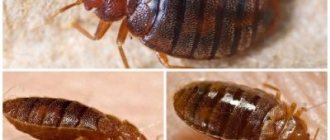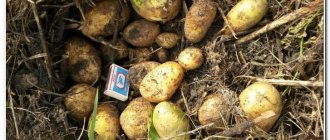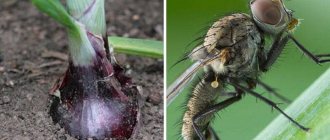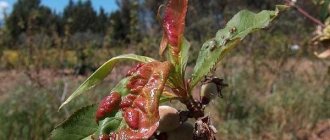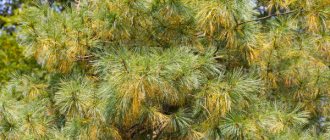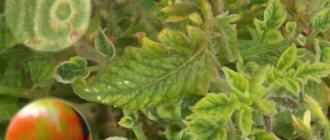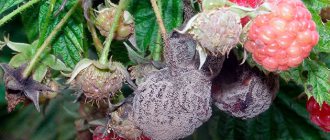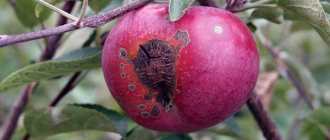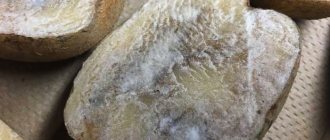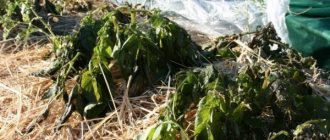When growing potatoes, gardeners often face one serious problem - various diseases of this crop. It is susceptible to late blight, potato cancer and many other diseases. The list also includes scab, which can and should be dealt with. How to get rid of this scourge? And what preventive measures should be taken to avoid losing a significant part of the harvest?
Scab is a fungal disease that primarily affects the skin of tubers. Less commonly, the fungus settles on plant roots and stems. The pathogen enters the pulp from the ground through miniature wounds and pores on the surface of the skin. Affected specimens lose their presentation, their taste deteriorates, up to 30% of starch disappears, and the keeping quality of the vegetable decreases.
First, let's look at the conditions that favor the development of this disease. Now they have already been identified and thoroughly studied.
What is potato scab
Outwardly, it resembles scabs on tubers. The lesion begins with small ulcers - if you do not pay attention to them in time, the disease reaches an extreme degree of manifestation - the appearance of deep cracks with torn edges. Bacteria develop in such tubers and the potatoes rot.
Spread of the disease
The disease mainly affects tubers and rarely spreads to tops and roots.
The fungus spreads by spores from one bush to another and gradually takes over the entire field if measures are not taken in time. The spores survive in the ground for up to three years, which is why it is so important to change the planting site.
The fungus can be spread by using fresh organic matter : scab spores remain viable after passing through the animal’s digestive tract. The cause of the disease may be incomplete disposal of infected potato tops in the fall.
During potato growth, it is impossible to notice scab , so it is important to take into account the presence of fungus on tubers during harvest and take preventive measures for the next year.
Description and photo
The causative agent of the disease is the fungus Rhizoctonia solani, which can infect the plant at all stages of ontogenesis and develop in the above-ground and underground parts.
The most striking sign that the tubers are infected with “black scab” are dark, difficult-to-remove growths that resemble pieces of earth. These are sclerotia that “sleep” while they are in unfavorable conditions and germinate when they find themselves in a moist and cool environment. The sprouted mycelium penetrates the sprouts and causes black indentations to form on them. If the spot closes into a ring, the above-ground part stops receiving nutrition and withers. Externally, it looks like blackleg disease. But the difference is that the sprouts withered by rhizoctonia are not pulled out of the ground.
Surviving but affected bushes are stunted in growth and may wilt during the daytime. In warm and humid weather, a “white leg” (a whitish coating that carries basidiospores) appears on the lower part of the shoots. During watering, spores can be washed into the ground and infect neighboring plants through the soil.
Related article: Prestige for potatoes: processing instructions and dosage
Airy green tubers formed in the axils of the shoots are also a cause for concern. They are a characteristic sign of infection with rhizoctonia.
Potato tubers grown on an infected bush can have two types of defects: deep ulcers (open or closed) and mesh necrosis. The first type of damage occurs if there was high soil humidity and low temperature during flowering and tuber formation. Necrosis occurs in years when the weather was hot and dry during tuber formation.
Causes of potato infection
The main reasons for the defeat of culture:
- non-compliance with crop rotation - it is important to change the planting site at least once every three years;
- planting affected tubers;
- increased nitrogen content in the soil;
- hot (25-30°C) dry weather promotes the growth of fungus;
- improper application of organic fertilizers;
- weak soil acidity;
- improperly equipped potato storage facility - elevated temperatures and humidity, large volume of potatoes with poor ventilation.
Reference. Loamy and sandy loam soils are more susceptible to scab. Before planting, the tubers must be pickled. Plant potatoes deeper to prevent excess oxygen.
Scab: causes
Potatoes can get scab under the following conditions:
- if the soil acidity ranges from 6.1 pH to 7.4 pH, there is a slightly alkaline reaction;
- when the temperature changes, when the soil warms up to 24-27 degrees;
- if there is excessive humidity in the area - over 55%;
- after adding a large amount of wood ash or lime to the soil;
- overfertilization with manure also has a detrimental effect on tubers;
- with an excess of microelements such as calcium and nitrogen;
- if there is a lack of boron or manganese in the soil.
How does scab appear on potatoes?
There are several varieties of scab depending on the color, shape and signs of the lesion.
Ordinary
Spots on tubers in the form of hard sores with a dry rim of dark yellow or brown color . They can cover entire potatoes or individual areas. Common scab occurs due to shallow planting and access of air to the tubers, due to improper application of lime and wood ash to the soil. It manifests itself in soils poor in moisture.
Spores enter the tuber through mechanical damage to the skin . Varieties with red thin skin are often affected by the fungus. The affected vegetable is poor in minerals, vitamins and amino acids.
Silver
A distinctive feature is its appearance in the form of silvery spots . First, brown spots or spots that look like black soot form. When the skin peels off, a gray spot appears in its place. The tuber becomes wrinkled. The size of the spot can cover up to 40% of the entire tuber.
This type of fungus dries out the tops, which leads to early death of the entire plant , softens the affected tuber, drying it out. The taste of such potatoes is unpleasant and they are not suitable for planting. The development of the fungus begins at a temperature of +3°C and high humidity (80-90%).
Silver scab
Other potato diseases:
Potato cancer and is it dangerous for humans?
What is potato late blight?
Powdery
The symptom is small focal growths on the stem . The tubers have white growths that turn brown over time. The ulcers contain brown dust from fungal spores and remnants of tuber tissue. Subsequently, the potatoes rot.
Sources of the disease are contaminated planting material, manure, humus, chicken droppings . Another reason is the soil is too wet. This type of scab affects the roots and stems of vegetables. Tubers become susceptible to late blight and dry rot.
Powdery scab
Black, or rhizoctonia
It develops at high humidity and affects the plant from the tuber to the leaves . This type of fungus looks like black loose spots, similar to stuck lumps of earth. Cover the tuber in small areas no more than 5 mm in girth. If the disease becomes active in the early stages of plant development, it can destroy the entire bush.
Tubers are poorly stored, rot does not develop deeply, but often other types of rot form on it , which completely destroys the crop. Early detection of potato rhizoctonia will help start treatment on time.
Rhizoctoniosis (black scab)
Tuberous
Only tubers are affected - tubercles appear, which then turn into pits with putrefactive contents . It appears most clearly in the third or fourth month of storage. Poorly dried tubers suffer the most.
Lumpy scab
Signs of defeat
Seals appear on the tubers, and the surface becomes rough. With severe damage, cracks appear, which gradually increase in size and lead to rotting of the fruit.
Causes of potato scab:
- weather conditions: the disease progresses in hot weather;
- infected planting material;
- adding organic matter in excess;
- growing vegetables in sandy and alkaline soils.
Thin-skinned varieties are more susceptible to the disease. Signs of the disease depend on the type of scab fungus.
How to deal with scab
There are many methods to combat scab - folk recipes, chemicals and biological methods.
Traditional methods
They use available organic fertilizers and herbal remedies that increase the resistance of tubers to scab. At different stages of growth, the following medicinal compositions are used (the ratio of the mass of fertilizer and water is indicated):
- before germination, planting material is sprayed with a 1.5% solution of boric acid;
- when planting, add 1 liter of bird droppings solution (1:15) to each hole;
- during the period of stem growth - water 1 bush with 0.5 liters of liquid mullein or bird droppings (0.5:10 liters);
- during the formation of the bush - watering 1 liter of nettle infusion per bush per week (10 kg: 100 l);
- during the budding period, pour 1 liter of ash solution (3 tbsp: 10 l) under the bush;
- during flowering, add 0.5 liters of mullein solution per bush (2 cups: 10 liters).
Chemical and biological methods
In addition to traditional methods, the use of the following drugs is effective:
- "Maksim". The drug is sprayed on tubers in the fall before storage (2:50 ml of water) and in the spring before planting.
- "Prestige KS". The tubers are treated before germination (70-100 ml of the drug is dissolved in 1 liter of water).
- "Fitosporin M". To treat tubers before planting, dilute 10 g of the drug in 5 liters of water. During the season, 3 treatments are carried out with watering the bushes.
- "Agate-25". Spray the seed potatoes before planting and treat the bushes (7g per 500 ml of water).
- "Quadris". Serves to treat the soil and protects it for two months (3 ml per 10 liters of water). The composition is enough to spray 10 m² of land.
Drugs for fighting
The most effective way to reduce the likelihood of the disease spreading is considered to be pre-planting treatment of tubers.
Among the biological drugs effective in the fight against rhizoctoniasis are:
The listed preparations are considered environmentally friendly and are approved for use in household plots. But, unfortunately, they do not always cope with their task 100%.
Chemical preparations are more effective (Vivatax 200, Fenoram, Utan, Maxim, Celeste Top, TMTD). But officially only Maxim, Celeste Top and TMTD are allowed to be used in garden plots.
When choosing a TMTD, you need to be prepared for the fact that in a couple of years it will become ineffective. Since it was noticed that when using it, strains resistant to the drug appear.
Celeste Top simultaneously fights all potato diseases and protects against insects. The popular drug Prestige is also effective.
Maxim or Celeste Top is diluted with water according to the instructions and the tubers laid in one row are sprayed so that they become evenly moistened. Consumption of the drug is 0.5-0.7 ml per 1 kg.
To “neutralize” the mycelium in the soil, they are treated with the fungicide Quadris, using 30 ml per 1 sq.m.
How to cure soil from scab
How to treat the soil if scab appears on the potatoes? A simple way is to use green manure plants that disinfect the soil .
Example. You can sow mustard. When the shoots are 15-20 cm tall, dig up the soil along with the young greenery. Dry mustard is also scattered between the bushes before watering.
Agrotechnical method : the plot is sown with cereals (oats, rye), legumes (clover, vetch, soybeans), cruciferous crops (mustard, rapeseed, Pancake week radish) or these crops are sown in the fall. The following year, potatoes are planted in this place.
Alkaline soils require acidification with ammonium sulfate at the rate of 2 tbsp. l. for 10 liters of water. A barrier to fungus will be created by superphosphate, potassium magnesium, potassium permanganate, boric acid and copper sulfate.
Means of prevention and control
Potato tubers affected by all types of scab, except rhizoctonia, are quite suitable for food. It is probably for this reason that gardeners, as a rule, do not pay due attention to the treatment of this disease. But it is necessary to fight it, since both the taste and nutritional value of such potatoes is reduced to a minimum. And if you plant even healthy, but not specially treated tubers on an infected plot of land, they will also be infected and there will be no end to this. So, how can you get rid of scab on potatoes and make sure that it does not appear on the plot again?
Agrotechnical techniques
The main way to combat scab is crop rotation. If you do not plant potatoes on contaminated soil for 4-5 years, the infection may have time to die out. But not everyone can afford to change the land for planting potatoes every year. Moreover, in this area you cannot grow any plants of the nightshade family (tomatoes, peppers, eggplants), as well as beets and carrots. They are also susceptible to the effects of this disease.
What can be done in this case is to sow the area with green manure immediately after harvesting the potato tubers. It is best to use mustard, but both legumes and cereals will play their positive role. When the seedlings reach a height of 10-15 cm, the area is dug up again or at least mowed and green manure is mixed with soil. Being in the soil, the remains of green manure contribute to the formation of saprophytic fungi and bacteria, which are natural enemies of scab pathogens. This is how our great-grandfathers fought against scab and quite successfully. In the spring, before planting potatoes, you can also plant fast-growing green manure, or at least sprinkle the future beds with mustard powder and water them. Mustard significantly reduces the number of fungal and viral infections in the soil, and also protects against many pests: thrips, wireworms, slugs.
Important! When preparing a site for planting potatoes, you should not add fresh manure to the ground. This could result in a significant outbreak of disease.
Since common scab spores develop especially well in alkaline soils with insufficient manganese and boron content, to combat this type of disease it is especially important to apply the following types of fertilizers in the spring before planting potatoes (application rate per 100 sq. m):
- Ammonium sulfate (1.5 kg);
- Superphosphate (2 kg) and potassium magnesium (2.5-3 kg);
- Microelements – copper sulfate (40 g), manganese sulfate (20 g), boric acid (20 g).
Treatment with various drugs
Other methods of controlling scab include, first of all, pre-planting treatment of tubers with various fungicides. It is quite effective and safe to use Maxim or the microbiological drug Fitosporin. The latter remedy can be used in different ways. It is not only intended for processing seed potatoes. To consolidate the effect, they are recommended to spray potato bushes three times during the growing season. To obtain a working solution, one packet of the drug is diluted in three liters of water.
There are many chemical preparations for getting rid of scab on potatoes. For example, to destroy black scab, both tubers and the plants themselves are treated with such strong drugs as Mancozeb, Fenoram Super, Colfugo. Treated tubers are able to resist disease even in unfavorable conditions.
In order to cope with other types of scab, it is not necessary to use such strong chemicals. For example, to suppress the development of common scab, various growth regulators, primarily zircon, are suitable. In its description it is noted that the harmfulness of the disease is reduced even with a single treatment with this drug. With twice its use, the disease may recede completely. 1 ml of zircon (1 ampoule) is diluted in 20-30 liters of water and the resulting solution should be treated with potato bushes after germination and at the beginning of flowering.
Potato varieties resistant to scab
There are no varieties of potato crops that are absolutely resistant to this disease , but gardeners have noted early-ripening varieties that are less susceptible to damage: Vesna Belaya, Lugovskoy, Zhukovsky Early, the high-yielding variety Elizaveta with tasty tubers, which is suitable for growing in the middle zone, the Far East and the North Caucasus. Temp is a late-ripening variety characterized by resistance to scab, high yield and good preservation.
Yantarny, Domodedovsky, Zarechny, Alena, Belosnezhka, Resurs, Lasunok also have immunity
Black scab (Rhizoctoniosis) of potatoes: description and control methods
Black scab, or rhizoctonia, is a common fungal disease that mainly affects potatoes. Pathology changes the appearance and worsens the taste of tubers, shortens the storage period of the root crop. In addition, seeds affected by infection are unsuitable for planting. In order to recognize scab from a photo in time and begin treatment, you need to know the causes and measures to combat it.
Infection prevention measures
The improvement of potatoes is carried out in the areas of protecting tubers and destroying fungus in the soil in the following ways :
- compliance with crop rotation;
- refusal to fertilize the soil with fresh manure;
- drying the crop;
- careful selection of seed potatoes without signs of scab;
- treating seeds with special preparations (polycarbocin or “TMTD”);
- storing potatoes in a cold, dry, ventilated area;
- germinating potatoes in the light - greening (protects not only from scab, but also from many diseases, as well as from rodents and pests);
- regular watering of the bushes during bud formation and flowering;
- choice for planting scab-resistant varieties.
Before being sent for long-term storage, the potatoes are dried for several hours and the infected ones are immediately destroyed . Scab spores can spread through the air. This is facilitated by room humidity, so it is important to avoid the formation of condensation in the vegetable storage area.
Preventive measures
Compliance with agricultural practices for growing potatoes allows you to minimize the manifestation of rhizoctonia.
It is important to adhere to correct crop rotation on the site. This will not only reduce the number of fungal diseases, but also “expel” harmful insects. Potatoes cannot be planted after cabbage, tomatoes, beets and pumpkin crops. Cereals, corn, and flax are considered good predecessors.
To get a good and healthy harvest, be sure to control the acidity and fertility of the soil. It is better to apply mineral and organic fertilizers in the fall before digging, so that by the time of spring work the organic matter has time to decompose.
To date, there are no potato varieties that are completely resistant to “black scab”, so purchased planting material must be carefully examined for the presence of sclerotia. For planting, use only clean tubers and preferably weighing at least 75 g.
Rhizoctonia blight develops faster on small seed potatoes.
It is better to plant potatoes in the middle period, when the soil has warmed up and heavy spring rains have ended.
It is equally important to plant the tubers at the correct depth. The development of the disease occurs when planting is too frequent and deep. It is better to stick to the following depth:
- on sod-podzolic soils – about 7 cm;
- on peat - 13 cm;
- on sandy or sandy loam – 10 cm.
On heavy, floating soils, the row spacing must be loosened.
Sclerotia form on tubers after the tops wither. Therefore, the longer the crop is in the soil, the greater the likelihood of it becoming infected. If you dig up potatoes within 10-12 days after the tops wither, you can minimize the process of sclerotia formation.
Related article: Planting potatoes before winter: instructions, pros and cons
To prevent the spores “living” on the tops from finding a new owner, after harvesting they are sent to the fire.
Well, the last rule that must be followed when growing any cultivated plants is that there should be no weeds on the site that can become a “haven” for fungi and bacteria.
Causes of appearance: why potatoes get sick
The main factor is the presence of conditions favorable for the growth and reproduction of the fungus. This is what causes the disease:
- overgrown soil;
- diseased planting material;
- long-term planting of potatoes in the same area;
- excessive use of nitrogen-containing fertilizers;
- high humidity and optimal soil temperature;
- alkaline soil promotes intensive growth of the microorganism;
- using manure as fertilizer before planting.
The disease and its types
Potato scab is a disease caused by the proliferation of fungal spores. An infected crop is not dangerous to humans. Potato scab makes the tubers visually unattractive and reduces the nutritional value, in particular, the level of starch is reduced by 2 times. In addition, the safety of the crop decreases several times. Rotting of the tubers occurs very actively, which sometimes makes it necessary to dispose of almost all the potatoes.
Main prerequisites for the development of the disease:
- Neglect of crop rotation rules;
- Growing potatoes in one area for more than 3 years in a row;
- Excess nitrogen in the soil;
- Prolonged high temperatures, from which the soil heats up greatly;
- Uncontrolled application of organic fertilizers;
- Weak soil acidity;
- Planting initially infected planting material into the ground;
- Activation of spores that were in the soil.
There are several varieties of this disease.
Black scab
Potato rhizoctonia is the most dangerous form, which affects not only the fruits, but also all other parts of the plant, including above-ground ones. The causative agent of the infection is Rhizoctonia solani. Infection of sprouts leads to growth inhibition and complete atrophy. If the leaves and stems are affected by rhizoctonia, then taking treatment measures is useless; the plant must be urgently eliminated.
Visually, the disease manifests itself in the form of black spots that look like stuck earth. The optimal environment for spore propagation is high humidity and temperatures above +18˚C, as well as cold and rainy spring. The soils on which this infection most often develops are loamy. If you allow tubers infected with black scab to be planted, the sprouts will hatch very weakly and will most likely die before flowering. You should not expect a harvest from such bushes.
Silver scab
The causative agent of this disease is the fungus Helminthosporium solani. The spots can occupy up to half the tuber area. Visually, they are not very visible; dry gray areas can be observed at the site of the lesion. The spores of this fungus are very cold-resistant and can tolerate temperatures up to +3 ˚C. During storage, potatoes do not rot, but dry out. More than a third of the total harvest is lost due to drying. Most often, the disease spreads on light soils, for example, loams or sandy loams with high humidity. The period of active spread is the flowering and tuberization phase.
Powdery scab
The causative agent is Spongospora subterranean, very active, quickly spreading both in the soil and on the plant. This type of scab appears on potatoes after prolonged rains, when the soil becomes very heavy and damp. Tubers may be completely covered with red-brown warts. White growths appear on the stems. Favorable temperature for reproduction is +12 ˚C. The fungus remains active in the soil for up to 5 years. When storing the crop, diseased tubers dry out, stick together with healthy ones and infect them.
Common scab
The causative agent of the disease is the fungus Streptomyces scabies. Spores live in light, dry soils with an alkaline environment. They begin to actively spread in hot weather at temperatures above +25 ˚C. Thin-skinned potato varieties are most vulnerable. The fungus appears in the form of brown, rough spots; with strong growth, the peel hardens and cracks, and the fruit begins to rot. Most often, this disease spreads on tubers; during storage, it does not spread to a healthy crop, since the spores go into hibernation due to low temperatures.
Lumpy scab
The causative agent is the fungus Oospora pustulans Owen. The spread of infection occurs through eyes and mechanical damage (chips, cuts, cracks). In these places, brown or brown tubercles form. With active growth, the tubercles turn into large growths. This type of scab develops at a temperature of +11 ˚C on sod-podzolic and marshy soils.
